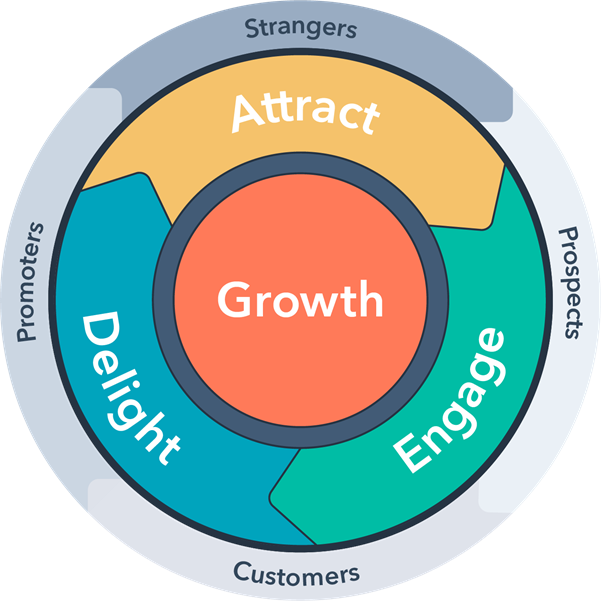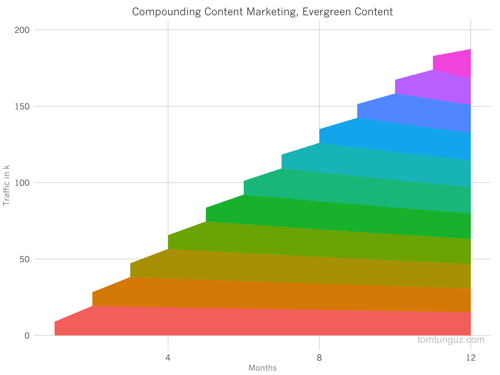
Gated vs ungated content: pros and cons
Feb 13, 2023
Inbound and outbound describe two fundamentally different approaches to marketing. Here we take an in-depth look at the key differences.
While the world of marketing is always changing at the tactical level, paradigm shifts in the way we market are less frequent. The most recent of these has been the movement from traditional, outbound marketing to inbound marketing.
Adoption of inbound marketing methods has grown rapidly in recent years, fuelled by success stories featuring measurable, dependable results. To get our heads around inbound, lets look at what it is and how it differs from the outbound methods you may have been using until now.
Inbound marketing vs. outbound marketing
Inbound marketing is a collection of activities that draw buyers in toward your brand as they perform their research online. Unlike outbound methods, which interrupt large audiences, inbound aims to connect you with your buyer where they are looking, when they are looking, and in ways that they welcome rather than ignore.
'Outbound' describes any marketing where you push your message out toward buyers, forcing it under their noses and hoping to generate a reaction.
Another name for this approach is 'interruption marketing' as it typically tries to take attention away from what your buyer is doing and bring it, forcibly, on to your product or service.
Classic examples of outbound tactics include direct mail, telemarketing, mass email marketing and banner advertising.
When running an outbound marketing campaign it is the marketer, not the buyer, who chooses the subject, timing and channel of interaction. In addition, most outbound tactics stop working the moment you stop paying for them.
While these tactics can still be of value to marketers, the way they have traditionally been used has become less and less effective because they go against the preferences of today's internet-enabled buyers.
Modern buyers want control of their buying process. They don't welcome attempts to sell to them, preferring to do their own research and only engaging with suppliers when near to making a purchase decision.
Inbound marketing, on the other hand, describes the use of marketing tactics that align with the way modern buyers want to conduct their purchase decisions - letting them come 'in' to you rather then pushing your message out.
Inbound marketing helps you get found by researching buyers, give them valuable information and advice remotely, and adapt your message as they move through the different stages of the buying process.
Another term that describes many inbound methods is 'permission marketing'.
By letting your prospects find your content online and only engaging with them once they explicitly express an interest, you are doing everything with their consent. By letting them choose the time and place, you let them keep control.
Marketing to buyers with consent and letting them have control demonstrates respect, builds trust and strengthens relationships. All of which leads to more opportunities and customers.
Examples of inbound marketing tactics include blogging, content marketing, lead nurturing and social media.
The best inbound marketing strategies follow HubSpot's Flywheel Model.
The flywheel sits at the heart of inbound methodology. It's divided into three segments – attract, engage, and delight:

Image credit: HubSpot
Here's how the flywheel works: when your customers succeed, they share that success with others. This attracts new prospects to your business, who also find success, share it, attract more prospects, and so on. As this cycle repeats, it creates a self-sustaining loop that builds momentum and drives growth for your business.
When you base your flywheel on the inbound methodology, your marketing, sales, and service functions can all increase its momentum. Let's take a look at what's happening at each stage of the methodology and how this differs from an outbound approach.
The first stage in winning a new customer is to attract them to you while they are researching their needs and challenges. This is the awareness phase of the buying process - during which buyers may be trying to define or solve their problems.
Search dominates this part of the process (85% of business purchases begin with a search) but buyers do not use product or brand names in their searches at this stage. They are more likely to type a naturally worded question describing the problem they are trying to solve.
Attracting these buyers to your website during this early stage is best achieved with targeted, helpful content that answers questions and provides good advice.
The most effective approach is to create high-value, long-form content (such as a pillar page), then write a series of blogs to support it and help flesh it out. Combine this content with a sound SEO strategy and an active social media presence and you have everything you need to start bringing the right people in to your website.
Outbound methods can also bring visitors in to your website, by getting them to click on banner ads or links in emails, but are less and less effective at doing so. This is because buyers have learned to tune out any marketing messages that are either uninvited or distract them from what they are doing.
Once you get a lead, the next step is to engage them. Sales and service have an important role to play here, but you can also use your marketing material to nurture your leads and lay the foundations of a longer-term relationship.
At this stage, thought-leadership pieces and educational content are the most effective ways to engage potential buyers. This content shows your expertise, helps prospects better understand their challenges, and guides them to make the best purchasing decisions. The goal here is to demonstrate the benefits of your product and how it aligns with their needs, without taking a hard sales approach.
By contrast, many outbound marketing tactics often try to convert prospect on the spot, rather than letting, or even allowing, buyers to convert when they choose.
Retaining customers is just as, if not more, important as gaining new ones. For most businesses the majority of revenue comes from existing customers and winning new ones costs far more than keeping one.
Fortunately, inbound marketing doesn't have to stop once a lead becomes a customer and can help turn them into loyal evangelists.
For instance, you can use evergreen blogs to provide valuable information for existing customers that might have specific queries about your products and services. Or you could implement a chatbot that offers support and requests customer feedback to get ideas for improvement.
The key inbound technique here is personalisation. Offering existing customers relevant new content, personalising sections of your website to them, or keeping them informed of key dates and events can all help you go beyond the sale to create repeat purchasers, upsell opportunities, and referral business.
Most outbound marketing, on the other hand, is focused on acquiring new customers and does little to support keeping or growing your existing ones.
One of the least talked about but most valuable benefits of inbound marketing over outbound marketing is compound returns.
While inbound marketing results may be small to start with, they grow over time. And, unlike most outbound techniques, they don't plateau, nor do they stop working the moment you turn off the budget.
A blog post you publish today will continue to drive traffic to your website one year from now. Meanwhile, in that year you can publish a lot more content, all driving traffic on top of the others.
Tomasz Tunguz describes and visualises this on his popular blog for SaaS startups.
 Image credit: Tomasz Tunguz
Image credit: Tomasz Tunguz
The same principles apply to lead generation and lead nurturing. If produced with care and well maintained, all these can deliver compound returns as you continue to invest in adding to them.
Marketing automation software isn't strictly required to implement the inbound approach to marketing. It can, however, help you do so at speed and with a, crucial, data-driven view.
Marketing automation is the technology that can connect data from all marketing channels with customer records in your CRM, allowing for a true buyer-centric, multi-channel approach within which analysis and continuous improvement is possible.
So while the use of marketing automation may not be mandatory, we believe it is a necessity if you are to see the benefits of inbound within a reasonable timeframe and budget.
Given the way that it aligns with the preferences of modern buyers, compounds returns and lowers costs per acquisition, inbound marketing should be considered the essential foundation of any SME's marketing plan.
Outbound marketing channels can still be effective, and are perfectly acceptable as part of a full marketing mix. But relying on them alone for results is likely to lead to disappointment.
This blog has been updated to reflect the latest information around inbound marketing strategies.